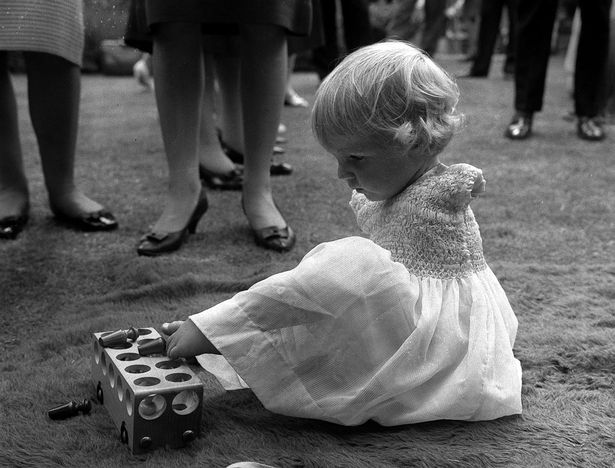The most important scientist of the 20th century, Albert Einstein.

We all know the name of the famous scientist, Albert Einstein, who transformed the world with his theory about time and space. Some passages about his personal and professional life will be addressed in these short lines.
Einstein was born in Germany in 1879 to a simple Jewish family. He was a somewhat shy child, he began speaking at the age of three, so it was thought that he had some kind of problem in development. He was patient and leisurely. He had a special connection with his mother, through music. She was a pianist, and Albert showed an interest in music from a very young age, learning to play the violin.

Picture-alliance / United Archives. Albert Einstein. 1951 https://www.dw.com/es/la-historia-detr%C3%A1s-de-la-foto-m%C3%A1s-ic%C3%B3nica-de-albert-einstein/a-56872306
Einstein was not a good student. Even during his undergraduate years in physics, he often skipped classes. Many teachers didn’t think he will be successful as they thought he was lazy. It was difficult for him to find work once he graduated in physics, because of his behaviour during his studies. But the truth is that Einstein liked to learn in his own way, he was self-taught. Seeking an explanation of things was what he enjoyed the most. He spent long hours staring at the light and deep in thought.
The Patent Office
It was so difficult for Albert Einstein to get a job, that he repeatedly considered giving up on physics to dedicate his life to selling insurance. Finally, a friend helps him get a job at the Swiss patent office. It was a position that allowed him to earn a living, to which he dedicated little time because he was very fast with the assigned work. It’s hard to imagine the most famous physicist of the 20th century at a boring desk job.
However, the free time allowed him to devote himself to physics and reasoning about the Universe. In 1905, while he was still working in the patent office, became known as “Einstein’s miracle year.” That year he sent 4 articles to European scientific journals, that would transform the way we see the Universe. The first was about the photoelectric effect. The second about the existence of atoms. In the third, he presents his famous E = mc2. And finally, he would publish the Theory of Relativity.

Photo: NASA/AP. A black hole devours a star located almost 2 billion light-years from Earth. https://theobjective.com/further/que-es-la-teoria-de-la-relatividad
Einstein was a stranger in the scientific world. These important articles went unnoticed, the wait was long for an impatient Albert. Five months have passed and they finally reach the hands of Europe’s most important theoretical physicist, Max Planck. Planck was perhaps the only scientist capable of understanding the magnitude and importance of these articles written by a stranger. Planck immediately wanted to know more about young Einstein. In June 1905, the Theory of Relativity was published in German Physics Anal.
Einstein’s Loves
Despite devoting most of his time to science, Einstein was a man who was not indifferent to love. It is not known for sure how many romances he had, since his faithful secretary was in charge of keeping everything as private as possible.
During the years of study, he used to play the violin at parties and events to earn some money. At these parties, it was easy for him to flirt and have brief affairs with one of the guests. Later he would meet his first wife, Mileva Maric with whom he studied physics. They had two children. Mileva participated in the creation of Albert Einstein’s articles. She wrote and revised mathematics, especially the Theory of Relativity. She was a scientist and always dreamed of being a great physicist, her dreams would never be achieved. This marriage would end with negotiation in 1919, after being married for 16 years.

Mr. Brainwash. Einstein. 2016. https://www.art-madrid.com/es/obra/mr-brainwash/einstein-3
During his first marriage, he maintained a secret romance through letters with a cousin, Elsa Löwental. His cousin was a housewife, and very different from the physician who was his wife. After his first divorce, he would marry Elsa. During his second marriage, he had an affair with the Austrian Margarete Lebach.
Years later, after Elsa’s death, he had an affair with a Soviet spy, Margarite Konenkova. The love letters were auctioned at Sotheby’s. Then he sought out the company of Johanna Fantova, whom he had first met in Prague and whom he met again at Princenton. She would be his companion until the end of his days.
Einstein the Pacifist
Albert Einstein was a passionate pacifist. During the years of Nazi rule, he fled Germany to the United States. There he lived until the end of his days. Through Hungarian scientific friends, he learned of German plans to create a superweapon. The uranium would be used in such a weapon to cause an unprecedented explosion. Einstein together with Leó Szilárd and Eugene Wigner (Hungarian physicists), decides to send a letter to the President of the United States, Franklin Delano Roosevelt. This letter warns about the danger of this superweapon. The signature would be Einstein’s, for being the most well-known scientist of the three.

Letter sent by Albert Einstein to the President of the United States Franklin Roosevelt. 1939. https://upload.wikimedia.org/wikipedia/commons/b/bf/Einstein-Roosevelt-letter.png
Then the race to develop the nuclear weapon begins, the Manhattan Project was born. Einstein would be known as the father of the nuclear bomb. This would mark him forever. He regretted signing that letter suggesting the development of a nuclear bomb.
He felt deep sadness and a total rejection of nuclear weapons. He decided then to support and participate in all the causes that requested and achieved strict control of nuclear weapons in the World.
Einstein’s Brain
In 1955, Albert Einstein died of an aortic aneurysm. The pathologist who performed the autopsy, Thomas Stoltz Harvey, decided to steal the scientist’s brain to study it. Over the years, various neuroscientists studied the famous physicist’s brain. They concluded that he had a brain with greater connections that linked one hemisphere to the other. Which allowed him a greater cognitive capacity.
Einstein wrote a large number of essays, actively participated in various fields, scientific, activist, political, among others. He was a man with an incredible sense of compassion and humility despite his overwhelming fame. The fame that he never managed to understand.

Photo: Cordon Press. Albert Einstein sailing. National Geographic. 2020. https://historia.nationalgeographic.com.es/a/robo-cerebro-einstein_15800
Einstein wrote:
¨The ideals that have illuminated my path, and time after time have given me the courage to face life with joy, have been Kindness, Beauty and Truth.¨
Sources:
AstroCosmo. Albert Einstein’s biography. 2020. https://web.archive.org/web/20081202074055/http://www.astrocosmo.cl/BIOGRAFI/B-A_EINSTEIN.HTM
Einstein, A. Essay: The world as I see it. Ideas and Opinions, based on Mein Weltbild, edited by Carl Seelig, New York: Bonzana Books, 1954. https://web.archive.org/web/20070928064918/http://www.network-press.org/?el_mundo_como_yo_lo_veo
Einstein, A. Document: Letter to President Roosevelt. 1939. https://upload.wikimedia.org/wikipedia/commons/b/bf/Einstein-Roosevelt-letter.png
Gavaldá, J. El robo del cerebro de Einstein. National Geography. 2020. https://historia.nationalgeographic.com.es/a/robo-cerebro-einstein_15800
Robinson, A. Why is Einstein famous?. Project Syndicate. 2015. https://www.project-syndicate.org/commentary/many-reasons-for-einstein-fame-by-andrew-robinson-1-2015-11?a_la=english&a_d=5655cfdbbc1f5710e8870ee5&a_m=&a_a=click&a_s=&a_p=%2Farchive&a_li=many-reasons-for-einstein-fame-by-andrew-robinson-1-2015-11&a_pa=archive-results&a_ps=&a_ms=&a_r=
Scientist Tells Of Einstein´s A-Bomb Regret. The Philadelphia Bulletin, May 13, 1955. https://web.archive.org/web/20061108075927/http://virtor.bar.admin.ch/pdf/ausstellung_einstein_fr/der_pazifist/A-Bomb_Regrets.pdf
The Manhattan Project. Part of the Einstein exhibition. American Museum of Natural History. https://www.amnh.org/exhibitions/einstein/peace-and-war/the-manhattan-project
Padilla, R. Confesiones de la última novia de Einstein. XL Semanal. 2017. https://www.xlsemanal.com/conocer/20170313/confesiones-la-ultima-novia-einstein-llamame-albert.html
Padilla, R. Los remordimientos de Albert Einstein. XL Semanal. 2020. https://www.xlsemanal.com/conocer/historia/20200727/albert-einstein-historia-segunda-guerra-mudial-nazis-bomba-nuclear.html
Unknown. Einstein y las mujeres de su vida. XL Semanal. 2019. https://www.xlsemanal.com/conocer/historia/20190208/albert-einstein-mujeres-amantes-vida.html







